An eye-catching piece of jewelry can be made even more beautiful and captivating by capturing the best possible shot. To highlight each piece’s fine details and bold colors, you need to master the art of photography. So, how to take good jewelry photos?
To take good jewelry photos, you can use a mirrorless or DSLR camera on a stable tripod to prevent shaking. Ensure ample lighting to enhance the jewelry’s beauty and adjust the aperture for sharp focus.
These techniques can help you capture stunning images that capture the essence of your jewelry. Stay tuned as we explore deeper into jewelry photography in this article.
What Does Jewelry Photography Do?
Jewelry photography plays a crucial role in showcasing each piece’s beauty and craftsmanship. Through high-quality images, designers and retailers can highlight the fine details and unique features that set their jewelry apart. It’s an essential tool for attracting potential customers and enhancing online and offline marketing efforts.
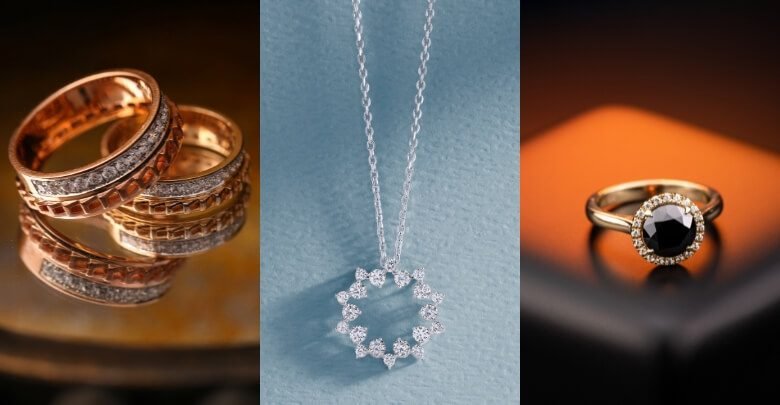
Showcasing jewelry through photography holds unprecedented significance in this digital age. With consumers heavily dependent on images for their purchasing choices, particularly in online shopping, the presentation of jewelry products through captivating visuals is paramount. This is where jewelry product photo editing plays a major role, ensuring that images are refined to be both enticing and authentic, thereby enriching the shopping experience.
Employing skilled photographers and utilizing jewelry photo editing services can help businesses create stunning visuals. The images not only showcase the product but also evoke emotions and desires in potential buyers. It’s a powerful way to connect with customers and drive sales.
Why Does Jewelry Photography Matter in the Modern Age?
Nowadays, jewelry photography plays a very important role in the digital landscape. These images directly influence consumer perceptions and decisions. This is a powerful way for brands to demonstrate their craftsmanship and design. Here is why it matters in the modern era:
- Online Shopping: The rise of online shopping has made jewelry photos more important than ever. This allows customers to see the product clearly and in detail.
- Brand Identity: Jewelry photography helps in establishing a unique brand identity. It allows brands to showcase their style and aesthetic through consistent imagery.
- Customer Engagement: Engaging visuals capture potential buyers’ attention. They play a key role in marketing campaigns and social media.
- Product Detailing: Detailed photographs highlight the jewelry’s intricacies and craftsmanship. This can enhance the product’s perceived value.
- Visual Storytelling: Through photography, brands can tell a story that resonates with their target audience. It’s an effective way to evoke emotions and connect with customers.
What Tools Are Required for Jewelry Photography?
Jewelry photography requires good technique and the right tools. Taking pictures of each piece is essential for capturing its beauty and details. With the correct equipment, you can create stunning images that attract customers.
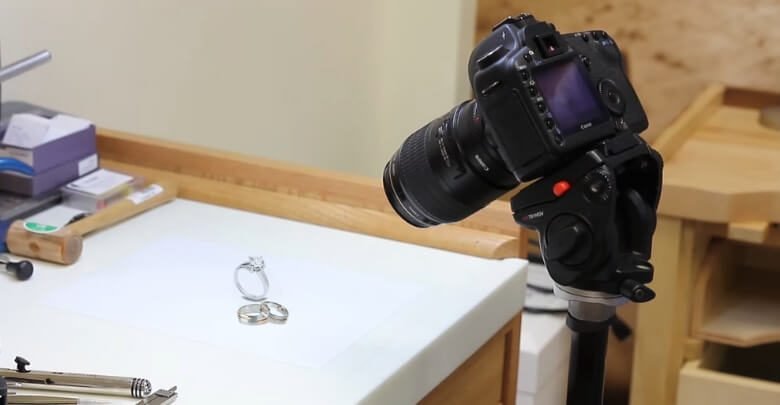
The following are some essential tools for jewelry photography:
Camera
High-resolution cameras, essential for detailed images, are preferred for image quality and versatility. DSLRs or mirrorless cameras, with the right settings for jewelry photography, offer better control over exposure and focus. They also come with effective macro capabilities to capture close-up shots of small jewelry pieces.
Lenses
Macro lenses are crucial for close-up shots of jewelry. They allow you to capture intricate details without distortion. A 50mm or 100mm macro lens is ideal for jewelry photography. Ensure the lens has a good aperture range to control the depth of field and blur the background.
Tripod
Stability is key in jewelry photography to avoid blurry images. A sturdy tripod prevents camera shake, especially during long exposures. It allows for sharp images and consistent framing. Invest in a tripod with adjustable height and angles for flexibility in shooting different types of jewelry.
Lighting
Proper lighting is essential to highlight jewelry’s features and colors. Use a combination of natural light and artificial light sources, such as softboxes or LED panels, to provide even illumination. Avoid harsh shadows and reflections by diffusing the light and using reflectors to fill in shadows.
Background
A neutral and simple background keeps the focus on the jewelry. White or light gray backgrounds are commonly used as they ensure that the jewelry colors stand out and make post-processing easier. Avoid busy or distracting backgrounds that can detract from the jewelry’s appeal.
Photo Editing Software
Post-processing is important for jewelry photography. Software like Adobe Photoshop or Lightroom allows for color correction, retouching, and enhancement of photos. Editing can make the images look more professional and appealing by removing any imperfections and adjusting the brightness and contrast.
How to Take Good Jewelry Photos?
Capturing stunning jewelry photos requires attention to detail and technique. A good photographer can bring out the beauty and intricacies of each piece. Follow these steps to take professional-quality jewelry photos:
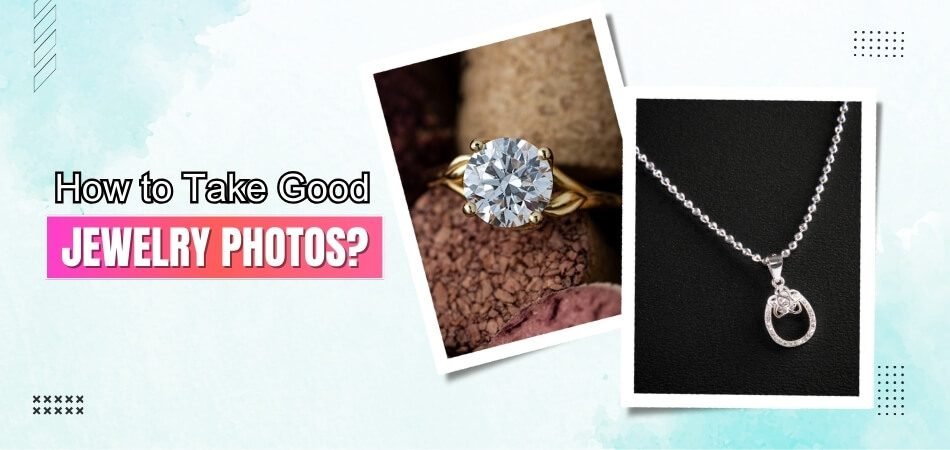
Step 1: Choose the Right Equipment
Select a high-resolution DSLR or mirrorless camera with a macro lens for close-up shots. Ensure your camera has manual exposure and focus settings. A tripod is also essential to keep the camera stable and avoid blurry images. If you don’t have a camera, you can also take good jewelry photos with smartphone, which requires some basic understanding of lighting, composition, and editing apps to enhance the quality of your images.
Step 2: Set Up Your Lighting
Lighting is crucial in jewelry photography. Use soft, diffused light to avoid harsh shadows and reflections. Natural light is ideal, but you can also use softboxes or LED panels. Position your lights to evenly illuminate the jewelry from different angles.
Step 3: Use a Neutral Background
Keep the focus on the jewelry by using a simple, neutral-colored background. White or light gray backgrounds work well as they reflect light and make the jewelry stand out. Avoid busy or distracting backgrounds that can detract from the jewelry’s appeal.
Step 4: Position Your Jewelry
Arrange your jewelry pieces carefully in the background. Use props or stands if necessary to keep them in place. Make sure each piece is clean and free from fingerprints or dust. Position the jewelry to showcase its best features and angles.
Step 5: Adjust Your Camera Settings
Set your camera to manual mode for better control. Use a low ISO to avoid graininess and a small aperture (high F-number) for greater depth of field. Adjust the shutter speed and white balance as needed to capture the true colors of the jewelry.
Step 6: Edit Your Photos
After taking your photos, use photo editing software to enhance them. Adjust the brightness, contrast, and saturation to make the colors pop. Crop the images to focus on the jewelry and remove any distractions. Retouch any imperfections for a polished final look.
By following these steps, you can take beautiful jewelry photos that showcase each piece’s elegance and craftsmanship. With practice and patience, you can capture the sparkle and allure of your jewelry in every shot.
Can You Do Jewelry Photography at Home?
Yes, you can do jewelry photography at home. All you need is a basic knowledge of photography techniques, some essential equipment, and the ability to do post-processing on your images. Here’s how you can accomplish it:
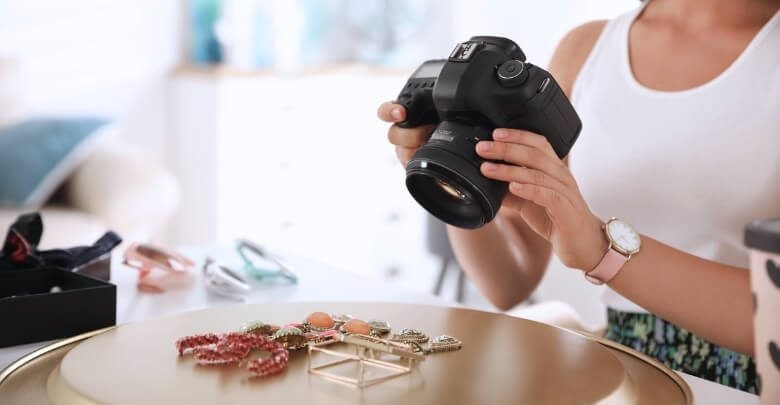
Learn the Basics
Before you start, you should know the fundamentals of photography. Learn about lighting, composition, and camera settings. Knowing how to use your camera’s manual mode is crucial for controlling exposure and focus.
Investing in Equipment
You don’t need a professional studio to take great jewelry photos. A good quality camera, a macro lens, and a tripod are essential. Consider also getting some softboxes or LED panels for lighting and a white or light gray background.
Setting Up Your Space
Find a space in your home with good natural light, such as near a window. Set up your background and position your lights to avoid harsh shadows. Use a table or a flat surface to arrange your jewelry.
Post-Processing
After taking your photos, use photo editing software to enhance them. Adjust the brightness, contrast, and colors to make your jewelry stand out. Crop the images to focus on the jewelry and remove distractions.
When to Seek Help from Professionals?
When you’re not getting the results you want or lack the time or expertise, it might be time to seek professional help for your jewelry photography. Here are some situations when you should consider hiring a professional:
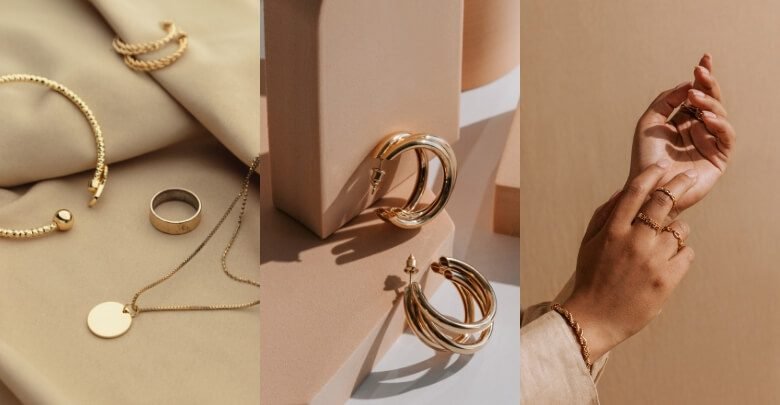
Complex Projects
Consult experts when working on a project involving intricate details or specialized knowledge. They possess the skills and tools needed to handle complexity. This ensures a higher quality outcome than attempting it alone. Professionals can deal with challenges efficiently, saving you time and frustration.
Time Constraints
If you’re under a tight deadline, professionals can expedite the process. They have the experience to work quickly and efficiently. This helps meet deadlines without compromising quality. It’s a practical choice when time is of the essence.
Quality Assurance
A professional service like Visual Sparrow is essential for tasks requiring high-quality results. As a professional editing service provider, Visual Sparrow guarantees quality that DIY efforts might not achieve. This is crucial for projects where accuracy and excellence are non-negotiable. By hiring experts, you can ensure that the end product meets your expectations.
The decision to hire professionals is a smart one when you need help with complex projects, tight deadlines, or quality assurance. It’s a strategic move that can lead to better outcomes and peace of mind.
Frequently Asked Questions about How to Take Good Jewelry Photos?
Here are some of the FAQs and their relevant answers for a clear concept of how to take good jewelry photos:
What is the Best Color to Photograph Jewelry on?
A neutral color like white, gray, or black is ideal. It provides a clean background that won’t distract from your jewelry.
How Do You Make Jewelry Look Shiny in Pictures?
Use a polarizing filter on your camera lens to reduce glare and make your jewelry appear shiny and reflective. This filter helps minimize unwanted reflections.
What is the Best Light for Jewelry Photography?
Natural light is often best. Place your jewelry near a window to take advantage of soft, diffused light. It highlights details without harsh shadows.
Is a Ring Light Good for Jewelry Photography?
Yes, a ring light can provide even, shadow-free lighting that highlights the details of your jewelry. It’s especially useful for close-up shots.
How Do You Photograph Jewelry Without a Professional Setup?
You can use a DIY lightbox made from a cardboard box and white paper to create a soft, diffused light for your jewelry. This setup helps minimize harsh shadows.
What Camera Settings Are Best for Jewelry Photography?
Use a small aperture (high f-stop number) to increase the depth of field and ensure your entire piece of jewelry is in focus. This technique brings out intricate details.
How Do You Prevent Reflections When Photographing Jewelry?
Position your jewelry at an angle to the light source and use a polarizing filter to minimize reflections. This reduces glare and enhances shine.
Final Thoughts
Mastering the art of jewelry photography is essential for capturing the true beauty of each piece. By following our step-by-step instructions on how to take good jewelry photos, you can highlight fine details and bold colors of your jewelry. Investing in the right equipment, being aware of lighting techniques, and utilizing post-processing are key components.
Additionally, the role of jewelry photography in today’s digital landscape cannot be overstated, as it significantly impacts consumer decisions and brand identity. No matter who you are, these principles can help you take stunning jewelry images that showcase their craftsmanship and elegance.